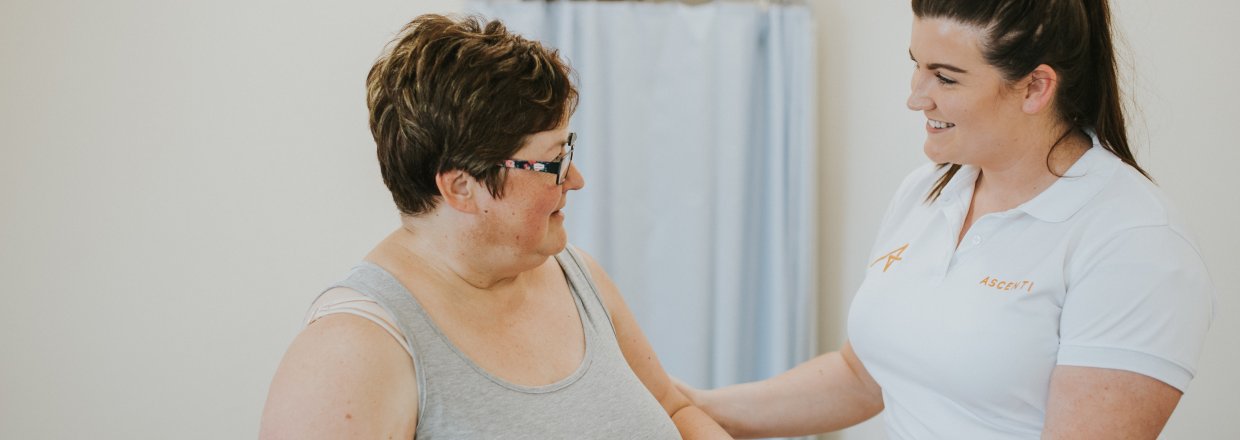Ice and heat therapy
Ice and heat is an easy and effective way to treat any pain or injury at home, and can help you to:
- Reduce pain
- Reduce muscle spasm
- Improve blood flow in the area
- Encourage healing
- Improve movement
What’s best - ice or heat?
You should use whichever one your body feels it needs.
The main difference is that ice can also reduce inflammation, bleeding and swelling.
This means that it can be helpful to apply ice to an injury or area that has suddenly swollen or become very painful within the first 48 hours.
Heat on the other hand is useful for aches and pains. Often people with arthritis and long standing conditions like back pain find heat very beneficial as the warmth makes soft tissues more pliable and can reduce stiffness.
Can using ice or heat be dangerous?
Using ice and heat at home is generally very safe, but you must apply correctly to reduce any risk of damaging or burning your skin.
If you are in a lot of pain then applying ice and heat can feel very relieving, which means that it can be easy to get carried away and apply for too long or too vigorously.
How do I apply ice correctly?
- Rub some barrier oil or moisturiser on the area you are going to ice. This can be olive oil, vegetable oil, almond oil or whatever you have. This helps to avoid any sticking.
- Wrap crushed ice, frozen peas or a chill pack from the freezer in a clean and damp tea-towel.
- Place over the area and secure with another towel.
- Never place your calf or thigh on top of the ice, always place ice on the body part as the extra compression can increase the risk of an ice burn.
- Leave for up to 5 minutes (within the first 48 hours of injury) or up to 15 minutes after this time, and remove if it gets painfully cold.
- Repeat every 2 hours for acute or severe injuries or 3-4 times a day for less serious injuries or complaints.
- The skin will look pink when you remove the ice but this is normal.
How do I apply heat correctly?
- Wrap a hot water bottle in 1-2 layers of towel, or heat a microwave wheat bag for the recommended time according to the instructions.
- Apply the heat pack to the area and secure with another towel to prevent it slipping and to insulate the heat.
- Leave in place for 15-30 minutes, checking the skin regularly to check it’s not feeling painfully hot.
- Remove after this time. The skin will look red or pink after heat application, but this is normal and will fade within 15 minutes of removal.
When not to apply ice or heat
Do not apply ice if you have any loss of sensation or numbness in the area, extreme sensitivity to cold, poor circulation in your hands or feet, Raynaud’s disease or broken skin.
Do not apply heat to the area if you have any loss of sensation or numbness, extreme sensitivity to heat, a fever, a blood clot, poor blood pressure, any sign of infection, poor circulation in your hands and feet, broken skin or eczema.
If you have any of these conditions or are experiencing these issues as well as a significant increase in pain to the area, then you should dial the NHS helpline on 111 or seek advice from a medical professional before you apply ice or heat to the area.
Learn more about using ice and heat at home.
Elevate
If you have injured a limb, there is a recommendation that elevating the injured part higher than the heart during the first 1-3 days is helpful, and can help the swelling reduce. So in between short bursts of gentle activity, elevate your limb perhaps whilst you ice/heat the area for between 15-30 minutes.
Exercise
Clinical Guidelines generally recommend continuing with normal activities as far as possible. Staying physically active is likely to be beneficial in maintaining range of movement, limiting functional restriction and improving pain levels. However, if activity or exercise causes pain levels to increase or symptoms to worsen it would be advisable to stop and seek advice from a health care professional.
Rest from aggravating activities
Avoidance of provocative activities (e.g. heavy lifting, running etc.) is an important part of recovery to help control inflammation and prevent further irritation. This however does not mean bed rest – it is important to keep moving to avoid worsening pain and further restriction of movement.
Flare-up
If you have a flare-up of your injury there are a few simple things which can be trialled before reaching out to a health care professional:
- Ice / heat (as above)
- Resting from aggravating activities
- Maintaining mobility as able
However, if you are concerned or following the above doesn’t settle your symptoms please seek help and advice from a health care professional.
